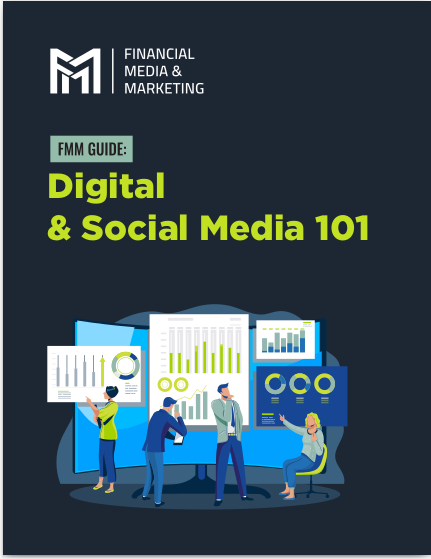Key Takeaways
- Tracking key performance indicators (KPIs) helps financial advisors measure success, make informed decisions, and enhance client satisfaction.
- Essential KPIs include client acquisition and retention rates, assets under management (AUM), revenue per client, client satisfaction, portfolio performance, and operating expense ratio.
Essential KPIs Every Financial Advisor Should Track for Success
Key Performance Indicators (KPIs) are critical metrics that financial advisors can use to gauge their success and identify areas for improvement. By tracking these indicators, advisors can make informed decisions, enhance client satisfaction, and drive the growth of their practice. Here are essential KPIs every financial advisor should monitor.
Client Acquisition Rate
Client acquisition rate measures the number of new clients gained over a specific period. This KPI is crucial for understanding how effectively your marketing and sales efforts are attracting new business.
Importance of Client Acquisition Rate
A high client acquisition rate indicates that your strategies for attracting new clients are working well. It reflects the effectiveness of your marketing campaigns, referral programs, and overall reputation in the market.
How to Track Client Acquisition Rate
Track the number of new clients acquired monthly, quarterly, and annually. Compare these numbers against your goals and historical data to identify trends and areas for improvement. Consider segmenting the data by source (e.g., referrals, digital marketing, networking events) to understand which channels are most effective.
Client Retention Rate
Client retention rate measures the percentage of clients who remain with your practice over a specific period. This KPI is vital for assessing client satisfaction and loyalty.
Importance of Client Retention Rate
High client retention rates indicate strong client satisfaction and effective relationship management. Retaining clients is typically more cost-effective than acquiring new ones, making this a critical KPI for long-term business success.
How to Track Client Retention Rate
Calculate client retention rate by dividing the number of clients at the end of a period by the number at the beginning, then multiplying by 100. Regularly review retention rates and analyze any declines to understand underlying issues and implement corrective measures.
Assets Under Management (AUM)
Assets Under Management (AUM) refers to the total market value of the assets that a financial advisor manages on behalf of clients. AUM is a primary indicator of business scale and success.
Importance of AUM
A growing AUM typically indicates client trust and confidence in your advisory capabilities. It also directly influences your revenue, especially if you charge a percentage-based fee on managed assets.
How to Track AUM
Monitor AUM on a regular basis, such as monthly or quarterly. Break down the data to see contributions from new clients, additional investments from existing clients, and changes due to market performance. Setting targets for AUM growth can help you gauge progress and motivate your team.
Revenue per Client
Revenue per client measures the average income generated from each client over a specific period. This KPI helps assess the profitability and value derived from your client base.
Importance of Revenue per Client
Understanding revenue per client helps you identify high-value clients and opportunities to enhance service offerings. It also highlights the financial efficiency of your client relationships and can guide strategic decisions about pricing and service models.
How to Track Revenue per Client
Calculate revenue per client by dividing your total revenue by the number of clients over a given period. Analyze variations across different client segments to identify which groups are most profitable and where there may be opportunities to increase revenue through cross-selling or upselling services.
Client Satisfaction and Net Promoter Score (NPS)
Client satisfaction and Net Promoter Score (NPS) are measures of how satisfied clients are with your services and how likely they are to recommend you to others.
Importance of Client Satisfaction and NPS
High levels of client satisfaction and strong NPS scores indicate that clients value your services and are likely to remain loyal. These metrics also provide insights into areas where you can improve client experience and service quality.
How to Track Client Satisfaction and NPS
Conduct regular client satisfaction surveys to gather feedback on various aspects of your service. Calculate NPS by asking clients how likely they are to recommend your services on a scale of 0 to 10. Clients who score 9-10 are promoters, 7-8 are passives, and 0-6 are detractors. Subtract the percentage of detractors from the percentage of promoters to get your NPS. Use this feedback to identify strengths and areas for improvement.
Portfolio Performance
Portfolio performance measures the returns on the investment portfolios you manage for clients. This KPI is critical for demonstrating your effectiveness as a financial advisor.
Importance of Portfolio Performance
Strong portfolio performance builds client trust and satisfaction, reinforcing your reputation and ability to attract new clients. It also provides a tangible measure of your investment strategy’s success.
How to Track Portfolio Performance
Monitor the performance of client portfolios regularly, comparing returns against benchmarks and client goals. Use performance metrics such as total return, risk-adjusted return, and volatility. Regularly review and adjust investment strategies based on performance analysis to ensure alignment with client objectives.
Operating Expense Ratio
The operating expense ratio measures the efficiency of your practice by comparing operating expenses to total revenue. This KPI helps manage costs and maintain profitability.
Importance of Operating Expense Ratio
A low operating expense ratio indicates that your practice is operating efficiently, with a higher percentage of revenue being retained as profit. Managing expenses effectively ensures long-term sustainability and financial health.
How to Track Operating Expense Ratio
Calculate the operating expense ratio by dividing total operating expenses by total revenue. Regularly review this ratio to identify cost-saving opportunities and areas where you can streamline operations. Compare your ratio against industry benchmarks to gauge your efficiency.
Conclusion
Tracking essential KPIs helps financial advisors measure success, make informed decisions, and enhance client satisfaction. By monitoring client acquisition and retention rates, AUM, revenue per client, client satisfaction and NPS, portfolio performance, and operating expense ratio, advisors can gain valuable insights into their practice’s performance and identify areas for improvement. Regularly reviewing and analyzing these metrics ensures that your financial advisory practice remains competitive, efficient, and client-focused, driving long-term growth and success.
Contact Information:
Email: [email protected]
Phone: 8777993433
Bio:
Stan Collins is a Marketing Specialist based in Arizona that focuses primarily on online branding and digital marketing. In addition to helping financial professionals, real estate agents, and other business professionals generate leads and perfect their online identities, Stan Collins also writes educational content about marketing.










